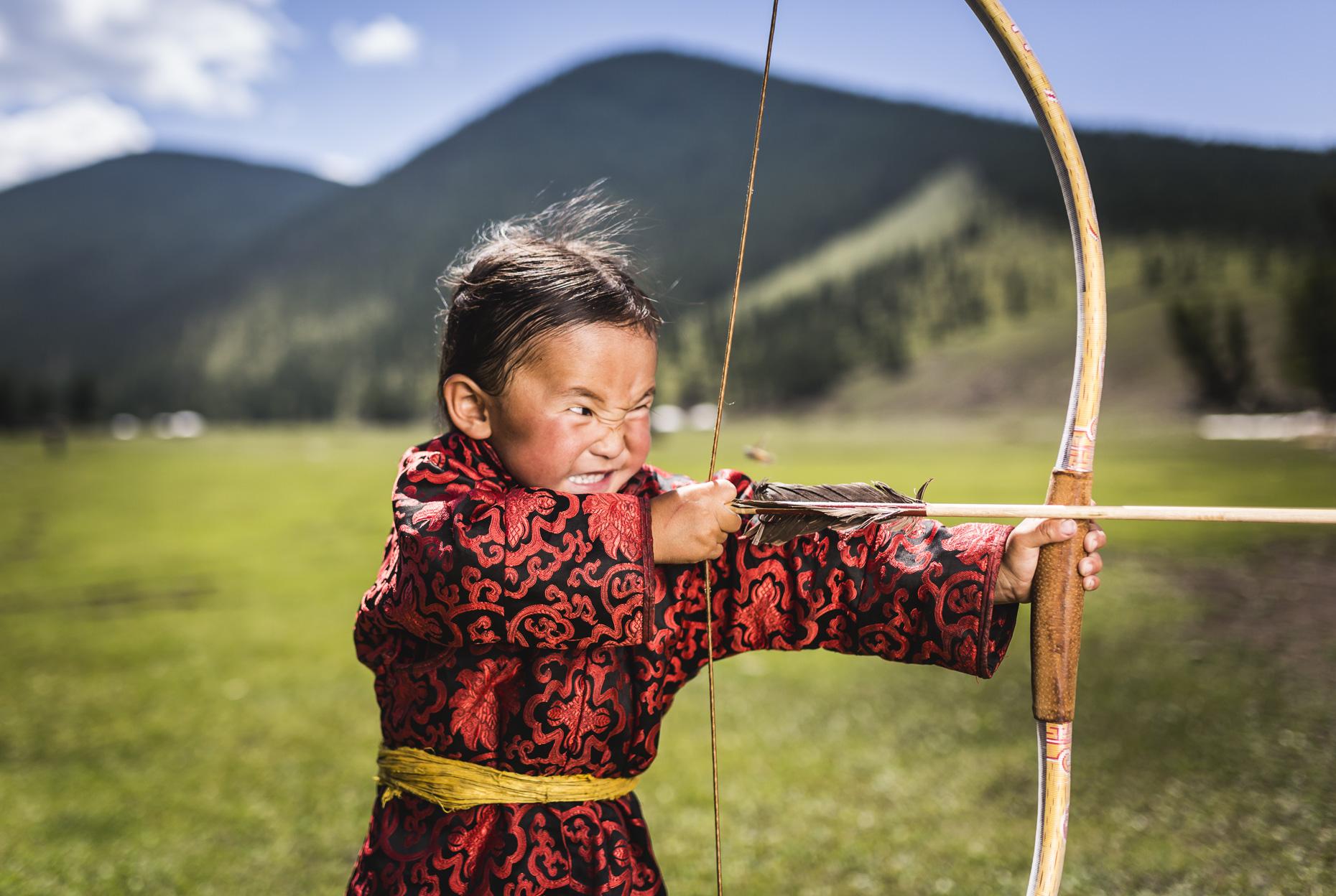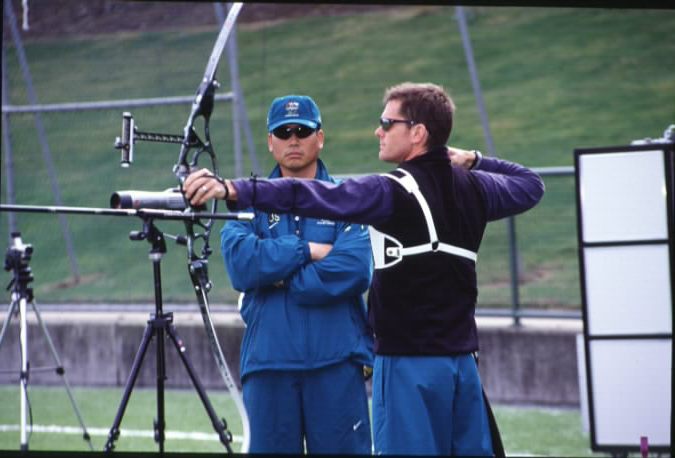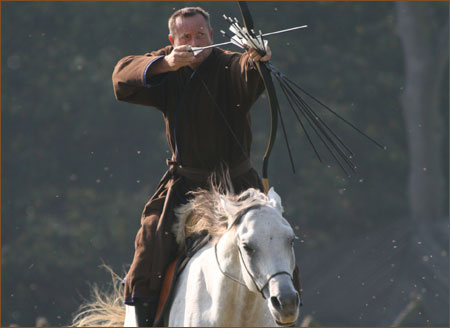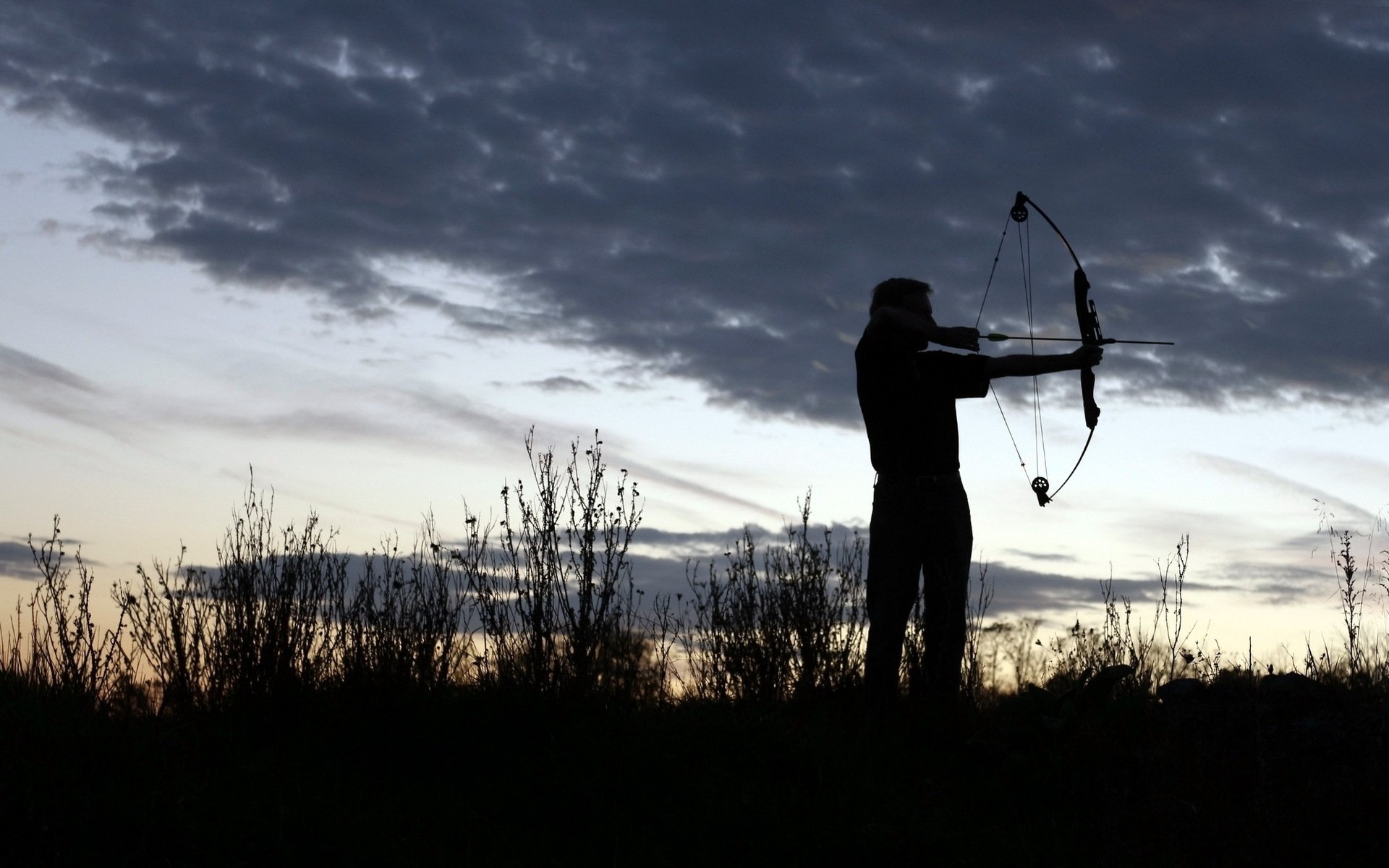Archery Drills
Archery Drills
This article discusses and demonstrates several archery drills that are used by high-level archers. Yes, some of them may seem basic and somewhat unexciting but let me assure you, high performing athletes would NOT repeatedly put these drills into practice if they were not effective. Archery, like other martial arts, is theoretically simple and can be reduced to basic fundamentals. A true master is first and foremost a master of the fundamental principles of a discipline. This mastery comes about from practice. Sometimes this practice can be tough, monotonous, and grueling, both physically and mentally. Nevertheless, this is what is required.

Practice Vs Training
There is a slight distinction that must be made between practice and training. In many sports, athletes simulate competition to help them better prepare for the actual competition. This could be classified as practice. For example, a basketball player may make several hundred free throws to practice for the real thing during a game. The basketball player may also lift weights to build some of the muscles involved in shooting free throws. Weight lifting is training. The shooting of the free throws is the practice. Shooting your bow is practice. Doing certain movements to developed archery muscles, flexibility, as well as muscle memory, is defined as training.
Archery Drills for Beginners
These archery drills are ideal for beginners to the art of archery. They focus on increasing the archer’s muscles in terms of strength, endurance, and flexibility. Also, through abundant repetition of drawing a bow, the archer will increase their muscle memory. Muscle memory integrates a motor activity into the nervous system, and can only be achieved through repetition.

Many of these archery drills are directly derived from Kisik Lee, an Olympic archery coach for the Korean, Australian and American teams. Coach Lee would go on to develop a technical and scientific approach to archery training. The training drills are categorized into four (4) aspects of development:
- Endurance
- Strength
- Flexibility
- Structure
Training to improve upon these core aspects has led to world-class archers who have gone on to win several medals in the Olympics. These archery drills are known as Specific Physical Training or SPT for short. SPT can be applied to any and all sports. These training techniques are designed to specifically enhance the athletic performance of one kind or another and hence the name.

Exercise – Draw & Hold
This exercise is perhaps the most basic of all. It will enhance muscular endurance.
- Take your bow, which should not be too heavy, and draw it without an arrow, to your typical draw length.
- Hold the full draw position for 30 seconds to 1 minute. You should pick a spot to aim at and attempt to keep the aiming at this location for the duration of the drill.
- Slowly and deliberately return the bow to the starting position. Do NOT dry fire a bow. Rest for a period of time that is double that of your holding time. For example, if you held for 30 seconds, rest for 1 minute (60 seconds).
- Repeat ten times. If you cannot make it to ten, do what you can. If you can do considerably more than 10 cycles, consider a stronger bow, or attaching exercise bands around the bow to increase the draw weight.
- After completing 10 cycles, rest for 2 minutes.
This should take approximately 15-30 minutes to complete 10 cycles. Work your way up to being able to do this exercise for an entire hour.

Exercise – Repetitive Draw
The repetitive draw builds strength as well as endurance in the archer. You may use a bow or resistance bands or both. A dumbbell row or other form of weight lifting row will also accomplish the same results.
- Draw your bow to full draw and hold for 3-5 seconds (no arrow required)
- Slowly and deliberately let the bow down to the starting position
- Repeat for 5-12 repetitions withing 3-5 sets
- You should be aiming at something, while also focusing on maintaining correct posture
Exercise – Overdraw
This exercise develops strength as well as helps opposing muscles stretch. Just your bow or an exercise band is required to accomplish this exercise. If you are going to use a bow for this exercise, it is recommended that you get a longer than usual arrow for your draw length.
- This exercise should be done with an arrow nocked and facing a suitable target for safety
- Simply draw back the bow to your usual length. The arrow can be marked so you can easily identify where your typical draw length would be.
- Once you have achieved full draw, slowly and deliberately continue to apply back tension and draw past your typical draw by approximately one inch.
- This slow extension past your usual draw is done over an 8-10 second period.
- In a controlled manner, slowly return to the starting position with the arrow nocked and with the bow ready to be drawn again.
- Rest for 30 seconds to one minute
- Repeat for 5 repetitions of five sets. Rest for 30 to 60 seconds between reps and for 1-2 minutes between sets.
- You can also use a resistance band to accomplish this exercise, however, it is recommended you use a bow.

Exercise – Behind the Back Draw
The purpose of this exercise is to get the archer used to the correct back and shoulder alignment when a full draw is reached. It can also be used as a warm-up exercise. A resistance band may be substituted for a bow as well.
- Lift the bow higher than you normally would for a level shot. The bow should be raised so that the handle or grip is just above the head
- Begin the draw the bow slowly towards the back of your neck. You may have to move your head slightly forward to accommodate your draw hand.
- Focus on the contraction of your back muscles and shoulder alignment.
- Hold the draw for approximately 5-10 seconds.
- Return to the starting position
- Repeat for 5 repetitions of 5 sets with 1-2 minutes of rest between sets.
Archery Aiming Drills
These archery practice drills help the archer improve their aim. The exercises described in this section will also help promote correct posture and technique. Taking aim can be a nerve-racking experience for some and that is why some additional training may be of benefit.

Exercise-The Mirror
Why are modern gyms and weight rooms covered in mirrors? Is it solely to promote narcissism and douchebaggery? Well, perhaps that has something to do with it. The actual technical reason for this is that it can help you in performing and exercise, lift, or moving. You can easily recognize and adjust any imbalance or flaw in your form by being able to see yourself in a mirror.
- Acquire a mirror and stand at a sufficient distance so you are clearly visible in the mirror.
- Use your eyes to look at yourself in the mirror. DO NOT rotate your head, as this would throw off your alignment.
- Do the “draw and hold” exercise outlined in the above section. While holding at full draw, observe yourself in the mirror and make any and all corrections to your posture and/or alignment.
- Remain calm and focused on your body while you achieve the correct anatomical alignment. This will help ingrain correct posture into your muscle memory.

Exercise – Extended Aiming
As the name of this exercise implies, the archer takes aim and holds this position for extended periods of time. Holding the aim while simultaneously focusing the body aids muscle memory retention. Extended aiming also improves muscular endurance and if practiced on a regular basis, can ease anxiety which leads to target panic.
- You should have a suitable target to aim at for this archery drill as you will have an arrow nocked and the bow will be fully drawn.
- With an arrow nocked, simply take the bow to full draw and hold.
- Focus on the target. Become one with the target.
- Continue to hold for as long as you can.
- Once you reach failure (you can no longer hold the bow at full draw) you may choose to loose the arrow or return the bow to the starting position.
- Rest for 2-3 minutes and repeat as desired.
Exercise – Incremental Distance
This is not really a training exercise but rather a method of practice that allows the archer to gradually build on their confidence when aiming. The method involves gradually and incrementally increasing the distance to the target. When the archer is a new and inexperienced, the target is pretty much at point-blank, perhaps 1 or 2 meters away. Over a period of several weeks or months, the distance between the target and the archer is gradually increased. Starting very close to the target, the archer focuses on the basics of form. There are many variations of when and bow how much to increase the distance to the target. Through experience, we found that if the archer starts at basically point-blank (1-2 meters away), an increase of 1 meter per 10 hours of practice will produce good results.

Archery Practice Drills for Accuracy
The following exercises and training methods promote accuracy. One of the two most important aspects of archery is accuracy, the other being consistency.
Training Frequency Alterations
A tried and tested method for increasing accuracy involves the frequency of training sessions. When the archer is relatively new, practicing 3-4 times a week is a good starting point. The archer should shoot a large number of arrows in each session while he or she is in the beginning phases. The number of arrows shot in each round should not exceed 3 or 4 arrows. If you shoot too many arrows, one after another it promotes monotony and weakens the awareness. The beginner archer should shoot as many arrows as possible from a distance that ensures good arrow placement. The training session will last approximately one hour.
The archer then decreases the number of arrows in each session while increasing the number of training sessions. Eventually, the archer will only shoot one arrow a day. Yes, you heard that correctly, one, single, lonely arrow. This allows for maximum focus and concentration on that one shot. This is especially effective before competition or hunting. In certain competitive or hunting situations, you will only get one opportunity to get it right. The following video further illustrates the training concept of shooting only one arrow during a session.
Blind Bailing or Shooting Blind
While it may seem somewhat counter-intuitive, having your eyes closed while shooting can help increase accuracy. The idea is to use the lack of visual stimuli and feedback to focus on your body and the movements involved in the draw and release.
- Stand at a reasonably close distance to the target. It should be practically impossible for you to miss the target. Keep safety in mind when blind bailing.
- Close your eyes.
- Go through the movements of shooting as you normally would, keeping your eyes closed the whole time.
- Do the movements slightly slower and more deliberately than you normally would. Focus primarily on these four criteria.
- Breathing. Breath deeply and deliberately. In through your nose when drawing the bow and out through your mouth immediately after the shot is released.
- Your body. With your eyes closed, sense if there is any tension or discomfort in your body. Maintain good posture. Focus on the increasing tension in your muscles as you draw the bow fully.
- Visualization. Focus on the target in your mind’s eye. Visualization is an extremely powerful tool utilized by top-level athletes in many sports. See the target right in front of you as if your eyes were wide open. This may take some practice. Some people are naturally better at visualization than others. You will improve with practice.
- The release. Focus on and try to notice the change in your body as you release. Concentrate on the transition from tension at full draw to relaxation as the arrow is loosed and you slowly exhale.
Check out the brief video below on blind bailing by a Kyudo master:
Archery Drills for Target Panic
Target panic can affect even the best archers. Fortunately, there are some simple archery drills that you can do to address the issue of target panic. Some of these exercises were mentioned in previous sections, but they are specifically mentioned here because of their effectiveness in addressing target panic.
Draw & Hold
Simply draw your bow, aim at the target, and hold. Keep holding. Hold until your muscles begin to fatigue and your aim really starts to wobble and wander. Then slowly let off the bow. Do not release! This helps the archer build confidence and control. You are in control! It is your conscious decision, your free will that dictates the release! Repeat this several times until you feel comfortable holding for extended periods and NOT releasing the arrow. This will also help build muscular endurance.
Blind Bailing
Some compound bow shooters may struggle with target panic as there may be sights on their bows. Sights are a great aid for aiming, however sometimes, as soon as the sight is aligned with the target, some people just find it hard to resist the temptation to punch the trigger. So, take your sights off your bow. Better yet, close your eyes (do not remove your eyes from your head). Draw your bow, and focus on shot execution. You will have no urge to pull the trigger when the sights align with the target because you won’t be able to see.
Shoot Don’t Shoot
This is a simple drill that requires an accomplice or coach. You simply draw the bow, aim, and hold. Do not release. Your coach will then tell you to let off or to release. The shoot or let off commands will be given randomly, with the archer having no knowledge of what the coach will say. This will help instill focus and control, and over time eliminate target panic.

Archery Training Plan
If you are serious about archery and perhaps would like to shoot competitively, you will need a training plan. This allows you to visualize ahead of time what exercises and archery drills you will be performing in the near future. You should also document your progress in a journal. Like the old saying goes: if it can be measured it can be improved. Several resources on archery exercises and training plans exist. Here are some resources to get you started.



